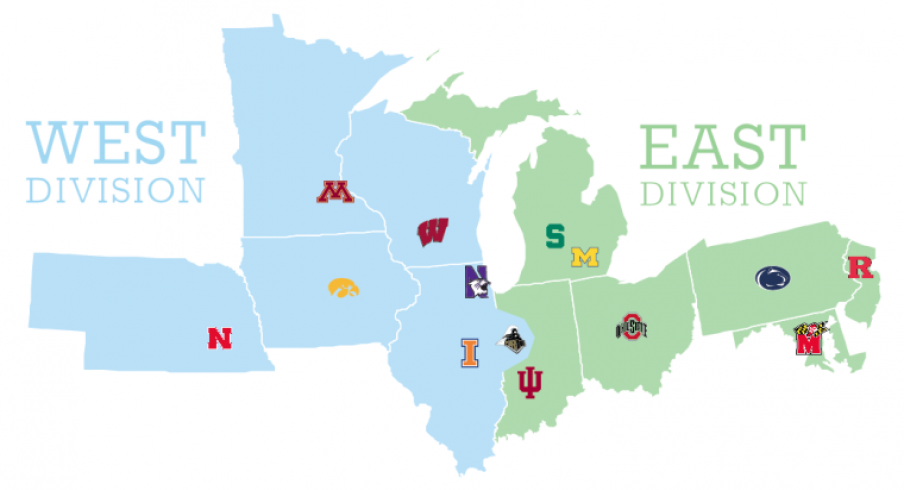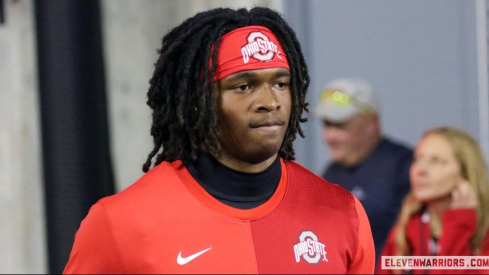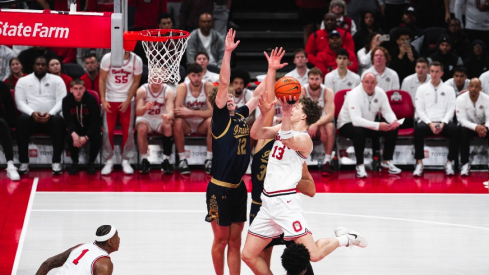On June 11, 2010, Nebraska announced it would apply for membership in the Big Ten. The announcement set into motion the unpredictable machinations of conference realignment.
Five years later, the Buckeyes find themselves in the 14-team Big Ten (we're really bad at counting). Besides Nebraska, Ohio State is rubbing shoulders with Maryland and Rutgers, schools invited to the Big Ten in November 2012. They are full conference members now, which would have been inconceivable a decade ago.
No matter how those three schools work out in the Big Ten, Ohio State will be stuck with them for a long time. Five years is enough time to evaluate how the new Big Ten is doing, so is Ohio State athletics better or worse off than it was five years ago?
Raking In The Dough
One thing is for sure about Big Ten expansion: it made everyone in the conference a lot of money.
In 2009, Big Ten schools each received about $19 million a year from the conference. It was a solid total, second to the SEC in per-school revenue, but not at its max. Adding Nebraska and Rutgers and Maryland to the conference made the Big Ten a whole lot more valuable.

Why? The Big Ten capitalized on a combination of fan interest and other conferences' failures. The Big 12 under-delivered in revenue for its schools, and Maryland and Rutgers were in valuable TV markets and desperate to make up budget deficits. The Big Ten was able to offer money and stability to all three schools to seal the deal.
For the Big Ten, inviting a 12th school allowed it to add a Big Ten Championship game, a foolproof money-maker. By adding Nebraska, the Big Ten added a profitable athletic department, boosted the conference's profile and made all of its members' games a little more notable. Maryland and Rutgers weren't nearly as attractive, but they increased the total number of conference games played, and expanded the conference to more populous parts of the country.
Gene Smith was wild about the moves to add Nebraska (and later Maryland and Rutgers). "I'm huge on where we are," Smith said in June 2010. "Philosophically, we share evenly in order to help everyone in this league have a quality environment for their student-athletes and ultimately rise all the ships."
He was right in dollars and cents. When the Big Ten signs its next TV deal in 2017, revenue distribution will be at least double what it was in 2009, $45 million or more per school. Ohio State's athletic department has been swimming in money since the move as well.
In 2009, the school had revenues of $119 million dollars. By 2014, the revenues increased to $145 million. That extra revenue has gone to major projects like mounting permanent football stadium lights, renovating the Schottenstein Center, installing scoreboards and more current concerns like feeding athletes.
When the numbers are released for 2015, Ohio State's football national championship will bring revenues to record levels. In fiscal terms, conference realignment has been an unqualified success for Ohio State athletics.
The Same Old Competition
| YEAR | TITLES |
|---|---|
| 2008-09 | 3 |
| 2009-10 | 5 |
| 2010-11 | 7 |
| 2011-12 | 2 |
| 2012-13 | 4 |
| 2013-14 | 3 |
| 2014-15 | 6 |
Ohio State athletics has had a spectacular 2014-2015 season, but it's hard to say the new Big Ten is the cause.
This has been a dominating year for the Buckeyes' 36 varsity teams. They won five national championships, including their first ever in wrestling, and six Big Ten championships – not even counting the titles Ohio State won in other conferences.
Looking before and after new schools entered the conference (2010-11 and 2014-15), there is no real pattern in how many titles OSU wins. The strength of the conference doesn't factor in, either.
In the last two years, the Big Ten sponsored conferences for men's hockey and men's and women's lacrosse. Women's lacrosse produced a national champion and three men's lacrosse teams advanced to the quarterfinals of the 2015 tournament, but men's hockey was abysmal.
Maryland and Nebraska expected to dominate at baseball, but it's the old schools (Purdue, Indiana and Illinois) that have been dragging the moribund Big Ten out of irrelevancy. The Big Ten was the best men's basketball conference four of the last five years, but Nebraska and Rutgers dragged down the conference ratings in 2015. In fact, Rutgers has been putrid in nearly every sport.
As for the money-driver, Big Ten football, little has changed. Even though Ohio State and Michigan State have represented the conference well since 2010, half of the conference isn't even trying to contend.
The Big Ten doesn't seem any more or less competitive since realignment (except for Rutgers, which is awful). 2015 has arguably been the best year in Ohio State athletic history, but there is no clear pattern of improvement or regression since realignment either except for the stench of Rutgers.
Cultural Disconnect
While the Big Ten is making more money and as competitive as it was before expansion, there's one area in which Ohio State is worse off: its ability to respond to crises and other bad ideas.
Here are some things the Big Ten has done since 2010 that Buckeye fans take issue with:
- Put Ohio State and Michigan in different football divisions despite widespread outrage
- Considered "fixing" the problem by moving The Game earlier in the year
- Invited a money-sucking athletic department to the Big Ten
- Invited an even more dysfunctional, money-sucking athletic department to the Big Ten
- Reduced the frequency of games against teams Buckeye fans actually care about
- Made obvious, pathetic bluffs, making actually constructive proposals look foolish
Ohio State did not benefit from any of these avoidable pitfalls. It would be naive to think the Big Ten exists solely to serve Ohio State's interests, but when the commissioner makes a hare-brained proposal that Thad Matta calls a "nightmare for recruiting", the conference is out of touch and working against the school.
In the next few years, lawsuits to determine the future of college amateurism will come into play. Despite the growth of stipends, the disparity of resources between coaches and players has never been greater. Some lawyers want to blow up the whole system, and the Big Ten is stuck on something called a "year of readiness"? The Buckeyes are only prepared for a post-amateurism landscape by virtue of being the largest school around, and that inertia won't last forever.
Is Ohio State better off five years after the Big Ten expanded to 12? Fiscally, no doubt. Competitively, yes (but not because the Big Ten is any easier or harder). In preparedness to face future challenges, no. Big Ten expansion wasn't good change or bad change for the Buckeyes; it was just change. Ohio State is lucky enough to be on top, and we'll see if the next five years are as kind as the last five.


